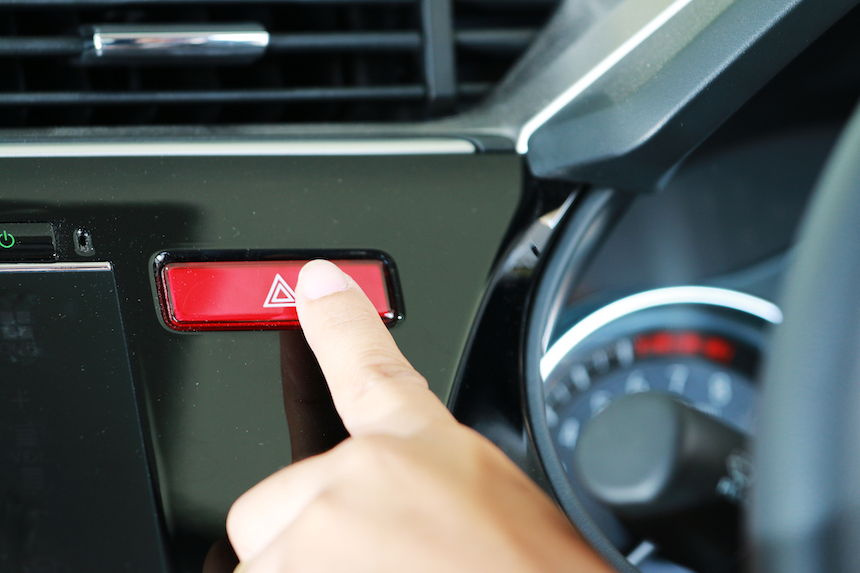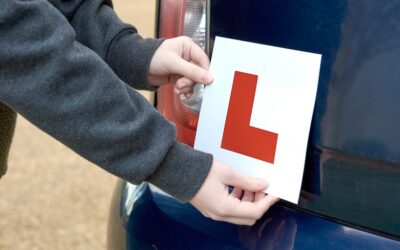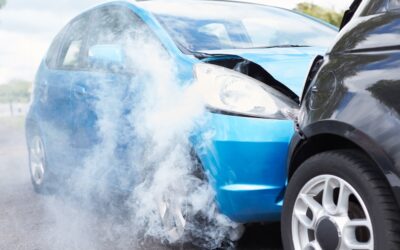In most cars, you activate your hazard warning lights by pressing a button that’s usually located in the middle of the dashboard. This button should have a red triangle on it.
What Do Hazard Lights Do?
When you press that button, all four indicators, front and back, will flash at the same time. When they flash, they’ll flash the same colour as your indicators – orange or amber. This is the standard colour for warning lights on UK roads, as opposed to red and blue lights, which are reserved for emergency vehicles.
How to Tell Your Hazard Lights Are On
When you activate your hazard warning lights, your indicators on the inside will flash too – those little green arrows. You’ll also hear the standard clicking sound that you hear when indicating.
When Are You Allowed to Use Your Hazard Warning Lights?
You should only use your hazard warning lights when your vehicle presents a potential hazard to other road users – or when you’re alerting other road users to another vehicle that cannot use its own hazard warning lights.
So here are some situations when you may use your hazard warning lights:
- You’ve stopped in a place that obstructs the path of other vehicles or pedestrians. This might be because you’ve broken down, or because you’ve had to pull over to let an emergency vehicle pass.
- You’re moving slowly and obstructing other road users. This might happen when you’re driving a vehicle that is legally entitled to be on the road, but it’s not capable of keeping up with the traffic flow, such as a tractor.
- You’ve stopped in an emergency stopping lane on a motorway or dual carriageway. In this case, your hazard warning lights will let emergency services know that you need help.
- You’re driving slowly in poor weather conditions, such as fog. In this case, your hazard warning lights will make you more visible to other road users.
Some specialist vehicles might also make use of hazard warning lights in certain situations. For example, an ice cream van may flash its hazard warning lights when it’s stopped to sell ice cream. Most school buses have hazard warning lights that flash automatically when they stop to drop off or pick up children.
But in any case, it’s important to remember that when you’re using your hazard warning lights, your indicators will no longer work. If you’re using them and you’re still able to move, you’ll have to disable your hazard warning lights before you make a turn.
When Should You Not Use Your Hazard Warning Lights?
Say you need to make a quick stop to pick something up from a shop, or to drop off passengers. You can’t find a parking space and you’ll only be stopping for a few minutes, or maybe even just a few seconds. So you might be tempted to quickly pull over – on a yellow zigzag, perhaps, or on double yellow lines. However, hazard warning lights do not override parking laws.
If you’re caught using them in this way – even if it’s just for a few moments – then at the very least you’ll receive a parking fine and you may also get points on your licence.
Hazard warning lights are also no substitute for headlights. They’re there to alert other drivers to your presence, but they’re not to be used when travelling through darkness without headlights. If your headlights aren’t working, then you shouldn’t be travelling after dark at all!
Finally, you shouldn’t use your hazard warning lights when you’re choosing to drive slowly, such as when you’re lost and trying to find your way. In this case, it’s best to pull over and get your bearings, rather than inconveniencing other road users through driving at a crawl.
Would You Know What To Do in a Breakdown?
To sum up, you should only use your hazard warning lights when your vehicle’s presenting a hazard to other vehicles.
You’re most likely to use your hazard warning lights when your car breaks down. This will alert other drivers to your presence while letting the emergency services know that you need assistance.
Breakdowns can happen to any driver, so it’s important to be prepared. We offer breakdown cover as an optional extra when you purchase your comprehensive car insurance policy. Get in touch for a free quote online.




